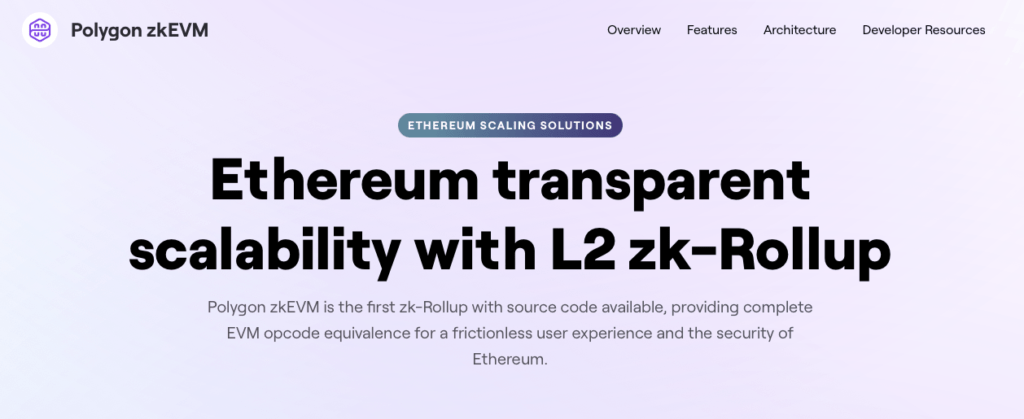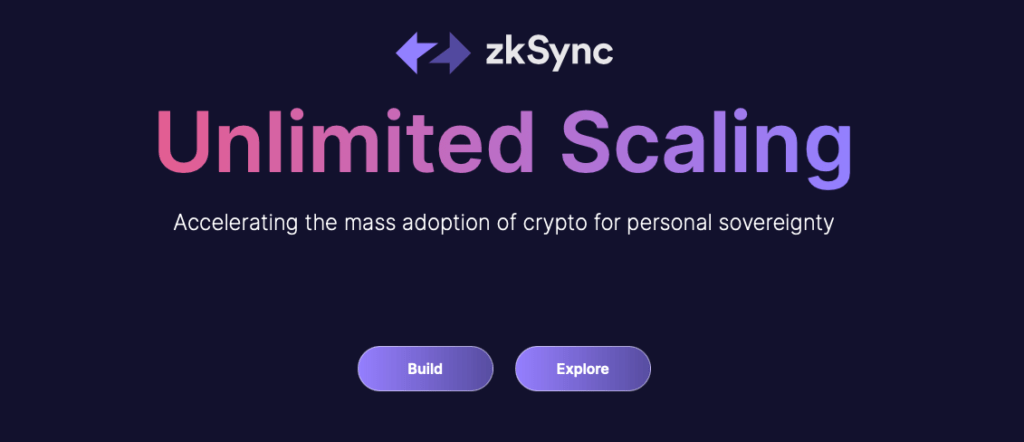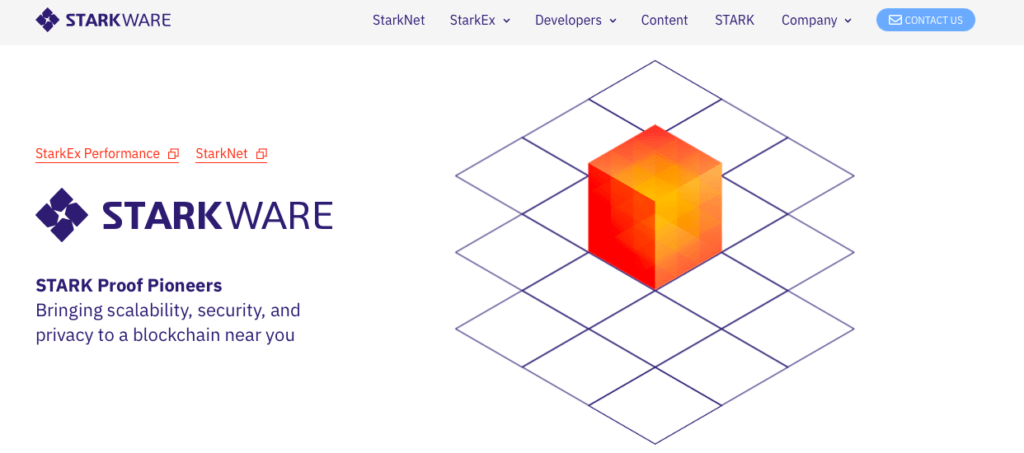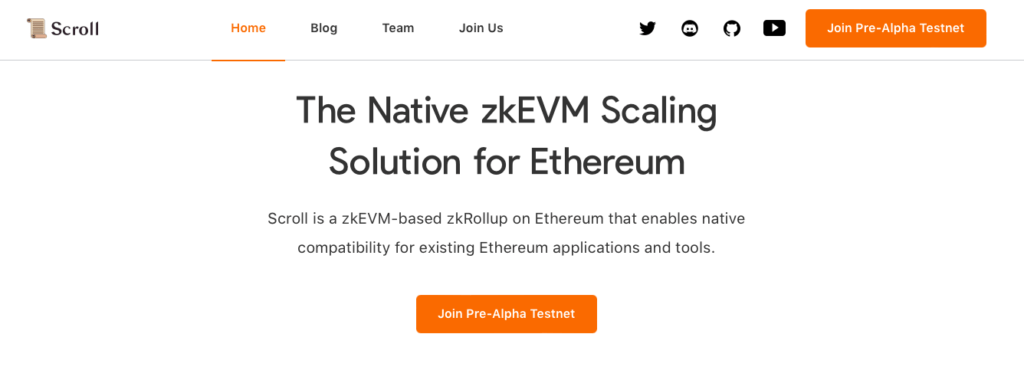Ethereum’s increasing popularity has led to a surge in the number of users and transactions on its network. This has resulted in high gas fees, longer confirmation times, and slower transaction speeds.
To address these issues, several layer 2 solutions have been developed, with zkEVM being one of the most promising ones.
In this blog post, we’ll take a closer look at the top zkEVM projects that are currently being developed to increase Ethereum’s scalability. These projects range from fully-featured EVM-compatible chains to specialized scaling solutions that target specific use cases.
What is a zkEVM?
A zkEVM (Zero-Knowledge Ethereum Virtual Machine) is a layer 2 scaling solution that uses zero-knowledge proofs to improve the scalability of the Ethereum network. It allows for the offloading of smart contract computations to a secondary layer, which frees up the main Ethereum network to handle more transactions.
In a zkEVM, transactions are verified through a process called zero-knowledge proofs. This is a cryptographic technique that allows for the verification of a statement without revealing any additional information beyond the statement’s truth.
Zero-knowledge proofs provide greater privacy and efficiency since only the necessary information is shared with the Ethereum network.
By reducing the burden on the main Ethereum network through offloading smart contract computations to a secondary layer, zkEVM allows for more transactions to be processed quickly and at a lower cost.
Comparison Table between Top zkEVM Projects
| Feature | zksync | scroll | polygon | starkware |
|---|---|---|---|---|
| General purpose | ✓ | ✓ | ✓ | |
| Easy to port | ✓ | ✓ | ✓ | |
| Native Solidity | ✓ | ✓ | ✓ | |
| Account Abstraction | ✓ | ✓ | ||
| Fully Open Source | ✓ | ✓ | ✓ | |
| Gas in ETH | ✓ | ✓ | ✓ | |
| Mainnet | ✓ | ✓ |
zkSync, polygon, and starkware offer general-purpose layer 2 scaling solutions that enable faster and cheaper transactions on Ethereum. All three solutions provide native Solidity support, easy portability, and gas in ETH.
List of Top zkEVM Projects in Ethereum Space
1. Hermez Network (Polygon zkEVM)

Polygon has recently introduced the Hermez zkEVM Project, which is aimed at addressing the scalability and privacy issues of the Ethereum blockchain.
The Hermez zkEVM uses zero-knowledge proofs [zk-Rollups] to process transactions quickly and cheaply while maintaining privacy. It accomplishes this by using the proofs to verify transaction correctness without disclosing sensitive details, resulting in faster processing and reduced fees.
Furthermore, the Hermez zkEVM improves privacy by enabling confidential transactions that conceal the specific transaction details from all but the sender and recipient. The Hermez zkEVM is compatible at the bytecode level, making it a practical option for a range of dApps and use cases.
This development is promising for the Ethereum network and the broader blockchain community, and it will be interesting to see how it is adopted and how it may impact the future of blockchain platforms.
Read Full Guide: How does Polygon zkEVM Work?
2. zkSync

zkSync is a scaling solution designed to enhance the speed and scalability of the Ethereum network. Using zero-knowledge proofs, zkSync can verify transactions without revealing any underlying data, which enables it to process transactions off-chain. This is done through a separate data structure known as a “Merkle tree.”
One of zkSync’s most significant advantages is its optimistic transfers, which enable users to send and receive transactions without needing confirmation on the Ethereum blockchain. This feature has significantly reduced transaction times and increased throughput.
zkSync leverages several other advanced technologies to improve scalability and security, such as signature aggregation, multi-chain support, and more. By providing a secure and scalable platform for dApps and other Ethereum-based projects, zkSync aims to make it simpler for developers to create and deploy decentralized applications while providing users with seamless interaction.
While zkSync faces the challenge of balancing scalability with security, it continues to enhance and refine its technology to minimize potential vulnerabilities.
Read this comparison: zkSync vs Polygon zkEVM
3. StarkWare

Starkware developed StarkNet, a layer-2 scaling solution that enhances blockchain efficiency and scalability, especially for smart contract-based blockchains. It leverages STARKs for secure and private computation without revealing data and sharding for parallel processing.
The goal is to facilitate the mass adoption of decentralized finance (DeFi) applications and expand to other use cases, such as supply chain management, voting systems, and medical research.
StarkNet has been integrated with major blockchains like Ethereum, Binance Smart Chain, and Polkadot, offering developers a scalable platform for building complex applications. Overall, StarkNet is a versatile and scalable protocol that advances blockchain technology.
Read our Full Guide: Starkware 101: Everything you need to know
4. Scroll

Scroll is a layer-2 scaling solution for Ethereum that aims to improve the network’s transaction throughput and reduce gas fees. Scroll uses a technique called rollups to batch multiple transactions off-chain and then generate a single proof that can be posted on the Ethereum blockchain.
This approach can significantly increase the number of transactions that can be processed per second while minimizing the cost and latency of each transaction.
Its transaction processing occurs off-chain and generates succinct verification proofs that are posted on-chain, resulting in enhanced throughput and reduced expenses compared to the Ethereum base layer.
Scroll’s platform provides a development experience that is equivalent to Ethereum, enabling the effortless deployment of any smart contract that is compatible with the EVM.
To ensure security, the protocol is undergoing multiple third-party audits, and Scroll values transparency and open collaboration with the community.
How zkEVM Increases Ethereum Scalability?
zkEVM leverages zero-knowledge proofs, a cryptographic technique that allows for secure and private data transfer without revealing any underlying information, to enhance Ethereum’s scalability.
One of the primary ways in which zkEVM achieves scalability is through its ability to aggregate multiple transactions into a single transaction, known as a “proof batch”.
This means that instead of processing each transaction individually, which can be time-consuming and resource-intensive, multiple transactions can be combined into a single proof. This reduces the computational overhead and increases the overall transaction throughput of the Ethereum network.
zkEVM also introduces a concept called “rollups”, which allows for the computation of transactions to be carried out off-chain, and only the final results are submitted to the Ethereum blockchain.
This enables a massive reduction in the amount of data that needs to be stored on-chain, making the network more efficient and scalable.
How zk-Rollups are different from zk-Proofs?
Let’s Explain this with an example-
Imagine a magical world where you can fit an infinite amount of data into a single piece of paper, and every time you want to add more data, you simply fold the paper in half and add it to the existing stack. That’s essentially what zk-Rollups do for the Ethereum blockchain!
Check this out: How zk-Rollups are different from Optimistic Rollups?
With zk-Rollups, you can bundle up multiple transactions and compress them into a single proof, which can then be submitted to the Ethereum network for verification. This process not only reduces the amount of data that needs to be stored on the blockchain but also minimizes the computational effort required to process each transaction.
But how do you ensure that the bundled transactions are valid and secure? This is where zero-knowledge proofs (ZKPs) come into play.
ZKPs allow you to prove that a certain statement is true without revealing any additional information, which means that you can verify the validity of multiple transactions without actually revealing their details.
The result? A faster, more efficient, and more scalable Ethereum network that can handle a much larger volume of transactions than before. With zk-Rollups, the sky’s the limit!
zk-SNARKs Vs. zk-STARKs
zk-SNARKs and zk-STARKs are both zero-knowledge proof systems that allow for private verification of computations. However, they differ in their underlying cryptographic constructions and their trade-offs in terms of efficiency, security assumptions, and ease of implementation.
zk-SNARKs use a variant of the elliptic curve cryptography to generate succinct proofs, which can be verified with a small amount of computational resources.
However, the setup process requires a trusted setup phase, where a set of public parameters are generated by a trusted party. This introduces a risk of the trusted setup being compromised, which could break the security of the entire system.
On the other hand, zk-STARKs are based on more generalizable and transparent mathematical constructions, such as the fast Fourier transform (FFT) and error-correcting codes.
Unlike zk-SNARKs, zk-STARKs do not require a trusted setup phase, and their security is based on well-studied cryptographic assumptions, such as collision-resistant hash functions.
However, the proofs generated by zk-STARKs are generally much larger than those generated by zk-SNARKs, which can impact their efficiency in practice.
One interesting application of zk-STARKs is in decentralized finance (DeFi), where it can be used to enable privacy-preserving transactions and ensure the correctness of smart contract execution without revealing any confidential information.
zk-SNARKs, on the other hand, are currently more widely used in blockchain protocols to provide transaction privacy.
Read More in detail: SNARKs vs STARKs: The Differences and Similarities
What is Ethereum Virtual Machine (EVM)?
The Ethereum Virtual Machine (EVM) is a sophisticated and complex virtual machine that enables the execution of smart contracts on the Ethereum blockchain. It operates as a decentralized computer, processing code and data stored on the Ethereum network.
The EVM is a Turing-complete runtime environment designed to be highly secure and fault-tolerant. Its programming language, Solidity, allows for the development of a wide range of decentralized applications (dApps) on the Ethereum blockchain.
Final Thoughts: Which Should You Choose?
In conclusion, zkEVM is an exciting technology that has the potential to significantly increase Ethereum’s scalability. As discussed, the best zkEVM Projects are Polygon zkEVM, zkSYNC, Scroll, and StarkNet.
As Ethereum continues to grow and the demand for fast and cheap transactions increases, it’s clear that solutions like zkEVM will become more and more important.
While it’s still early days for this technology, the progress made by these four projects is a promising sign for the future of Ethereum and decentralized finance as a whole.
#Do your Own Research, Not Financial Advice


